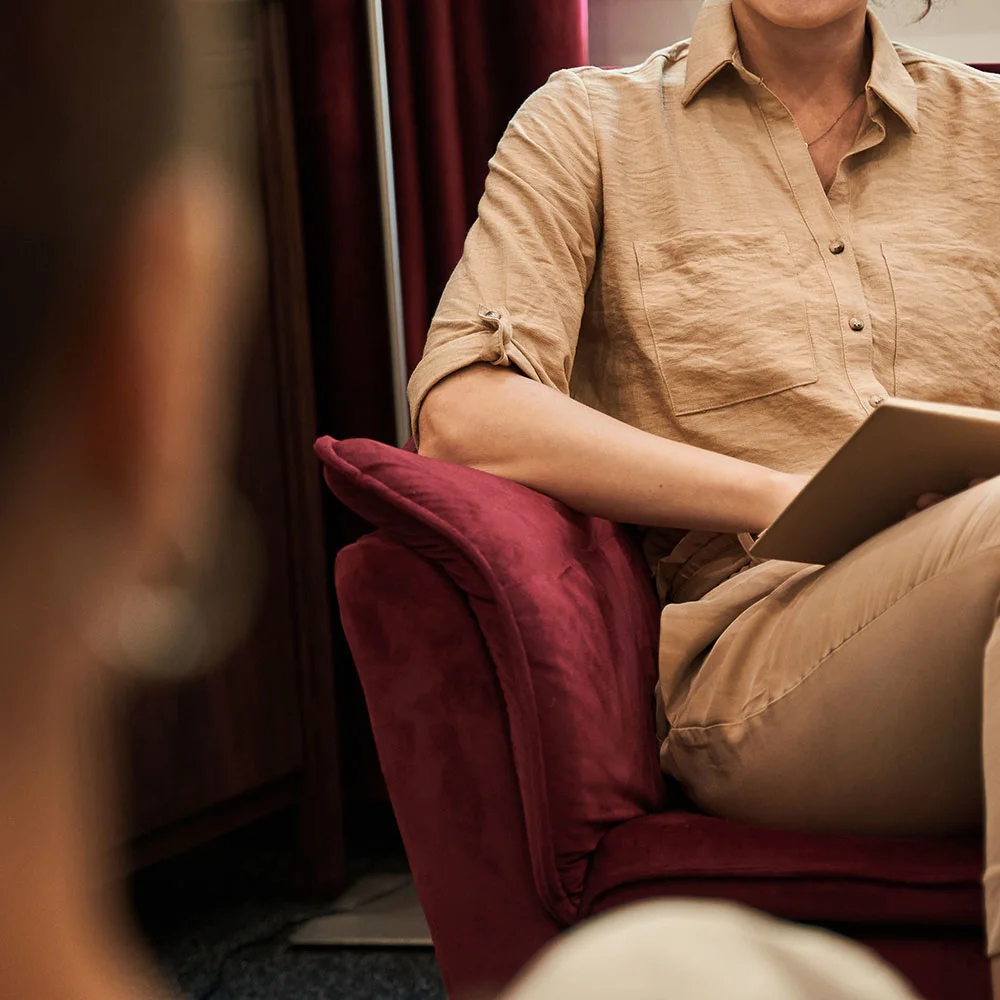Here's what we'll cover
Here's what we'll cover
Here's what we'll cover
You may have heard people talking enthusiastically about the benefits of microdosing illegal drugs like LSD or magic mushrooms. But what does microdosing mean? Is it safe? Are the benefits real? Read on to learn what microdosing is, how people do it, and what some of the possible risks and benefits are.
What is microdosing?
Microdosing is the ingestion of tiny amounts of psychoactive drugs or drugs that affect mental processes such as perception, cognition, and emotions (WHO, 2022).
The substances most people use when microdosing are lysergic acid diethylamide (LSD or “acid”) and psilocybin mushrooms (“magic mushrooms”).
The amount taken during microdosing is supposed to be too small for a person to become intoxicated or to have their behavior altered (also referred to as a “trip”). Instead, people report taking small doses with the intention to improve their mood, mental function, creativity, and energy levels (Kuypers, 2019; Lea, 2020).
Microdosing was originally a tool used in pharmaceutical development. When companies set out to test a new pharmaceutical drug, scientists give very low doses—1% of an active dose—of the drug to see how it moves and behaves in the body (Kuypers, 2019).
There are some interesting therapeutic possibilities for microdosing, which are reinforced by enthusiastic reports in surveys of people who microdose (Johnstad, 2018). But while there is some scientific evidence to back these anecdotes up, there aren’t enough quality microdosing studies for scientists to agree on whether it’s safe or effective.
It’s important to also note that there’s no such thing as “microdosing heroin” or “microdosing meth.” These substances are some of the most highly addictive out there, and there’s a thin margin between tiny doses and those that are clearly harmful (Lachenmeier, 2015).
Possible benefits of microdosing
Some of the reported positive effects of microdosing include (Johnstad, 2018; Lea, 2020):
Increased energy and pleasure in life
Improved cognition
Reduced symptoms of mental illness (like trauma, depression, and anxiety) and ADHD
Improved sleep
Increased self-care
Increased sense of wellbeing
One survey study showed that 44% of respondents found their mental health was “much better” because of microdosing (Lea, 2020).
The trouble is that there aren’t a lot of clinical trials on microdosing psychedelics, and the evidence we do have isn’t considered high-quality. Remember that anecdotal reports aren’t necessarily medical evidence. They can be compelling, but they shouldn’t be solely relied on as demonstrating that something is safe or advisable.
Ultimately, we need more evidence on the safety and effectiveness of microdosing, and most healthcare providers don’t recommend self-medicating with illicit drugs for depression, anxiety, or other mental health conditions.
That being said, there is more high-quality research on using full doses of psychedelics for the treatment of mental illness, and many studies are promising.
A systematic review of randomized controlled trials—one of the strongest methods of getting high-quality medical evidence—investigating the use of LSD in psychiatry found that it has significant therapeutic potential, especially for treating alcoholism (Fuentes, 2020).
Microdosing and the placebo effect
A 2021 study—the largest placebo-controlled study on microdosing to date—found that many of the perceived benefits of microdosing might actually be due to the placebo effect (Szigeti, 2021). This means that people who received placebos—inactive drugs or substances—benefited as much as those who were actually taking psychedelics.
This doesn’t necessarily mean that microdosing is useless; many pharmaceutical drugs have significant placebo effects and are still used to treat serious illnesses (Kirsch, 2019).
How to microdose
It’s important to remember that LSD and psilocybin mushrooms are currently schedule 1 controlled substances, meaning that according to the federal government, they have no medical value and a high potential for abuse.
Any microdosing techniques you find have not been developed and shared through medical research but by individuals through experimentation.
Of these techniques, three commonly used microdosing schedules use “on” and “off” days of microdosing for a duration ranging from one week to two years (Kuypers, 2019):
Two days on, two days off
Weekdays on, weekends off
Every other day or every three days
Microdosing shouldn’t produce any intoxicating effects. The typical goal of microdosing is to feel relaxed, energetic, and creative, and the generally accepted way to achieve this is with the lowest effective dose possible—not by tripping or getting high. If you feel high, you’re taking too much for it to be a microdose.
A good way to track the effects a given microdose has on your body, and to make sure your doses stay consistent, is by keeping a microdosing journal. It may also be helpful to read some literature on the topic.
James Fadiman, widely considered an authority on microdosing and therapeutic use of psychedelics, wrote a book called The Psychedelics Explorer’s Guide, which is commonly used as a microdosing resource (Polito, 2019).
How to microdose mushrooms and LSD
While there is no scientifically established definition of what a microdose means, a microdose for the two most commonly used psychoactive drugs (psilocybin mushrooms and LSD) is often considered as (Kaertner, 2021):
Psilocybin mushrooms: A ‘shroom’ microdose is generally between 0.1 grams (g)–0.5 g of dried mushrooms
Lysergic acid diethylamide: Microdosing LSD (“acid”) generally involves between 5–20 micrograms (mcg)
How to microdose THC
While not as common as microdosing with mushrooms or LSD, some people microdose THC (the psychoactive component of marijuana or cannabis). Typically, the dose used is 1 milligram (mg).
Risks or drawbacks of microdosing
There isn’t any specific research on the safety of microdosing, although studies on larger doses of psychedelics suggest that they are relatively safe (Berkovitch, 2021; Polito, 2019).
One of the biggest risks, especially for synthetic drugs, is that it’s impossible to know exactly what is in them and if there are dangerous additives like fentanyl—one of the biggest culprits in the recent spike of overdose deaths in the United States. Taking street drugs is always dangerous for this and other reasons, but using fentanyl test strips may at least help identify whether a drug is laced with fentanyl (Krieger, 2018).
Also, keep in mind that any recreational drug can result in upsetting or unwanted responses, including:
“Bad trips”: A negative experience while on the drug that may cause unpleasant hallucinations, anxiety, or fear.
Possible worsening psychiatric symptoms
Elevated heart rate and blood pressure
Dangerous interactions with prescription medications
Erratic or dangerous behavior and impairment of judgment
We’re a long way from safe, legal, systematic recommendations from healthcare providers for microdosing as medical treatment. If you choose to microdose, remember that most drugs used to microdose are still illegal. While the social landscape surrounding drug use is seeing some small shifts, this is a big roadblock to more clinical trials being conducted on microdosing.
DISCLAIMER
If you have any medical questions or concerns, please talk to your healthcare provider. The articles on Health Guide are underpinned by peer-reviewed research and information drawn from medical societies and governmental agencies. However, they are not a substitute for professional medical advice, diagnosis, or treatment.
References
Berkovitch, L., Roméo, B., Karila, L., et al. (2021). Efficacité des psychédéliques en psychiatrie, une revue systématique [Efficacy of psychedelics in psychiatry, a systematic review of the literature]. Encephale, 47 (4):376-387. French. doi:10.1016/j.encep.2020.12.002. Retrieved from https://www.sciencedirect.com/science/article/abs/pii/S0013700621000592?via%3Dihub
Fuentes, J. J., Fonseca, F., Elices, M., et al. (2020). Therapeutic use of LSD in psychiatry: A systematic review of randomized-controlled clinical trials. Frontiers in Psychiatry , 10 , 943. doi:10.3389/fpsyt.2019.00943. Retrieved from https://www.ncbi.nlm.nih.gov/pmc/articles/PMC6985449/
Johnstad, P. G. (2018). Powerful substances in tiny amounts: An interview study of psychedelic microdosing. Nordisk Alkohol Nark, 35 (1):39-51. doi:10.1177/1455072517753339. Retrieved from https://pubmed.ncbi.nlm.nih.gov/32934512/
Kaertner, L. S., Steinborn, M. B., Kettner, H., et al. (2021). Positive expectations predict improved mental-health outcomes linked to psychedelic microdosing. Scientific Reports, 11 (1), 1941. doi:10.1038/s41598-021-81446-7. Retrieved from https://pubmed.ncbi.nlm.nih.gov/33479342/
Kirsch, I. (2019). Placebo effect in the treatment of depression and anxiety. Frontiers in Psychiatry , 10 , 407. Retrieved from https://www.frontiersin.org/articles/10.3389/fpsyt.2019.00407/full
Krieger, M. S., Goedel, W. C., Buxton, J. A., et. al. (2018). Use of rapid fentanyl test strips among young adults who use drugs. International Journal of Drug Policy , 61 , 52-58. doi:10.1016/j.drugpo.2018.09.009. Retrieved from https://www.sciencedirect.com/science/article/abs/pii/S0955395918302469
Kuypers, K. P., Ng, L., Erritzoe, D., et. al. (2019). Microdosing psychedelics: More questions than answers? An overview and suggestions for future research. Journal of Psychopharmacology , 33 (9), 1039–1057. doi:10.1177/0269881119857204. Retrieved from https://www.ncbi.nlm.nih.gov/pmc/articles/PMC6732823/
Lachenmeier, D. W. & Rehm, J. (2015). Comparative risk assessment of alcohol, tobacco, cannabis and other illicit drugs using the margin of exposure approach. Scientific Reports , 5 , 8126. doi:10.1038/srep08126. https://www.ncbi.nlm.nih.gov/pmc/articles/PMC4311234/
Lea, T., Amada, N., Jungaberle, H., et al. (2020). Perceived outcomes of psychedelic microdosing as self-managed therapies for mental and substance use disorders. Psychopharmacology, 237 (5):1521-1532. doi:10.1007/s00213-020-05477-0. Retrieved from https://pubmed.ncbi.nlm.nih.gov/32043165/
Polito, V. & Stevenson, R. J. (2019). A systematic study of microdosing psychedelics. PloS One , 14 (2), e0211023. doi:10.1371/journal.pone.0211023. Retrieved from https://journals.plos.org/plosone/article?id=10.1371/journal.pone.0211023
Szigeti, B., Kartner, L., Blemings, A., et. al. (2021). Self-blinding citizen science to explore psychedelic microdosing. eLife , 10 , e62878. doi:10.7554/eLife.62878 Retrieved from https://www.ncbi.nlm.nih.gov/pmc/articles/PMC7925122/
World Health Organization (WHO). (2022). Drugs (psychoactive) . Retrieved from https://www.who.int/health-topics/drugs-psychoactive#tab=tab_1










